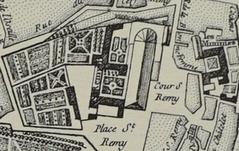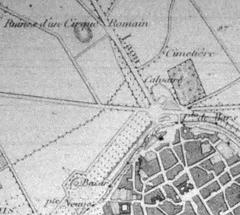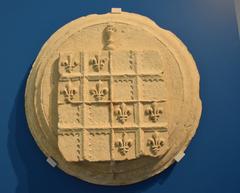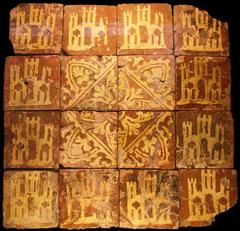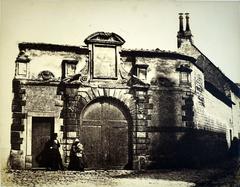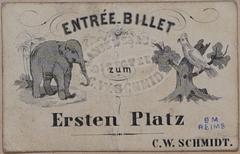
March to Reims Visiting Guide: Reims, France – History, Tickets, Hours, and Travel Tips
Date: 14/06/2025
Introduction
The March to Reims in 1429 is a seminal event in French history, celebrated for its intertwining of military strategy, religious tradition, and national identity. Led by Joan of Arc, this campaign culminated in the coronation of Charles VII at the Notre-Dame de Reims Cathedral, a defining moment in the Hundred Years’ War. Today, Reims and its historic sites provide visitors with an immersive journey into the Middle Ages, offering a blend of architectural marvels, cultural festivities, and opportunities to retrace the footsteps of Joan of Arc.
This guide presents a detailed overview of the historical context, key sites, visitor information—including opening hours and ticketing—travel tips, and recommendations to make the most of your visit to Reims and the March to Reims route (Kiddle, Explorial, France-Voyage).
Historical Context: The March to Reims and Its Significance
Setting the Stage: France in 1429
At the dawn of 1429, France was deeply divided. The Hundred Years’ War had seen the English and their Burgundian allies occupy much of northern France, including Paris and Reims—the traditional site of royal coronations. The Treaty of Troyes (1420) had named Henry V of England and his heirs as successors to the French throne, sidelining the young Dauphin, Charles VII. Following the deaths of Charles VI and Henry V, the infant Henry VI was recognized as king in occupied territories, while Charles VII retained only the south (Kiddle).
Joan of Arc’s Intervention
Joan of Arc, a teenage peasant claiming divine guidance, persuaded Charles VII to let her lead an army to relieve Orléans. Her victories at Orléans (May 1429) and Patay (June 1429) reversed French fortunes and paved the way for the march to Reims. Joan insisted that Charles should be crowned at Reims to legitimize his claim, despite the risks of traversing enemy-held territory (Kiddle, St Joan Center).
The March and Coronation
The march began at Gien in late June 1429. Joan led a large army northward, encountering little resistance as towns—impressed by her leadership and emboldened by shifting allegiances—opened their gates. After strategic stops in Auxerre, Troyes, and Châlons-en-Champagne, Charles VII entered Reims to a triumphant welcome.
On July 17, 1429, Charles VII was crowned in the Notre-Dame de Reims Cathedral. Despite the modest ceremony—royal regalia remained in English-held Saint-Denis—the event restored the tradition of sacral kingship and united much of France under Charles’s banner. Joan of Arc stood beside the king, symbolizing the fulfillment of her divinely inspired mission (Kiddle, thetouristchecklist.com).
Legacy and Cultural Significance
The March to Reims and the coronation at the cathedral marked the beginning of the end for English ambitions in France. The event is commemorated annually in Reims with the Fêtes Johanniques, featuring reenactments, medieval fairs, and city-wide celebrations (maryannesfrance.com). Joan of Arc’s role as a national heroine is celebrated throughout the city, with plaques, statues, and dedicated stained glass in the cathedral (nomads-travel-guide.com).
Visiting Reims: Essential Information
Notre-Dame de Reims Cathedral
Overview:
A UNESCO World Heritage Site, the Notre-Dame Cathedral is renowned for its Gothic architecture and as the coronation site of 33 French kings, including Charles VII.
- Visiting Hours: Typically open daily from 9:30 AM to 6:30 PM (may vary on holidays and during special events).
- Admission: Entry is free. Tickets are required for guided tours and tower access, which can be purchased onsite or online.
- Accessibility: The cathedral is wheelchair accessible, with ramps and audio guides available in several languages (France-Voyage).
Palais du Tau
Overview:
Once the palace of Reims’ archbishops and the venue for post-coronation banquets, the Palais du Tau now houses a museum dedicated to coronation history and artifacts.
- Visiting Hours: Open Tuesday to Sunday, 10:00 AM–6:00 PM; closed Mondays.
- Tickets: Approximately €7 for adults, with discounts for students and seniors. Entry is included with the Reims City Pass.
Saint-Remi Basilica and Museum
Overview:
This basilica is another UNESCO site, housing relics of Saint Remi. The adjacent museum explores Reims’ royal and religious history.
- Visiting Hours: Typically open 9:00 AM–6:00 PM daily.
- Tickets: Basilica entry is free; museum entry requires a ticket.
Place Royale and Historic Streets
Explore the medieval streets and squares Joan and Charles VII once traversed. Guided walking tours and self-guided maps are available at the tourist office to help you retrace the route (nomads-travel-guide.com).
Annual Festivals and Reenactments
- Fêtes Johanniques:
Held annually in late May or early June, with historical reenactments, medieval markets, workshops, and parades (maryannesfrance.com). - Joan of Arc Festival:
Features costumed processions, concerts, and interactive workshops for all ages.
Practical Travel Tips
When to Visit
- Best Season: Late spring to early summer (May–June) coincides with the Fêtes Johanniques and mild weather.
- Alternative: Reims offers historical tours and exhibitions year-round.
Getting There
- By Train: High-speed TGV from Paris (~45 minutes).
- By Car: Well-connected highways; paid parking and park-and-ride options.
- Public Transport: Efficient bus and tram network; included with the Reims City Pass.
Accessibility
- Wheelchair Access: Most major sites are accessible; check with venues ahead for specific details.
- Transport: Low-floor buses and trams facilitate mobility.
Guided Tours
- Walking Tours: Focus on the March to Reims, Joan of Arc, and city history. Tours in English and other languages are available (nomads-travel-guide.com).
- Virtual Tours: Some venues offer virtual visits for remote exploration.
Accommodation
- City Center: Boutique hotels, cottages, and B&Bs close to the main sites.
- Nearby Villages: Options in Epernay, Hautvillers, and Ay for a quieter experience.
Dining and Refreshments
- Place Drouet-d’Erlon: Lively square with cafes and restaurants. Lunches from €10; dinners at mid-range restaurants from €30 (SoloSophie).
Champagne Houses
Combine your historical tour with a visit to world-renowned Champagne cellars. Book tours in advance, especially during peak seasons (Champagne Booking).
Key Figures of the March to Reims
- Joan of Arc: Inspirational leader and strategist.
- Charles VII: The Dauphin crowned at Reims.
- Military Leaders: Jean II d’Alençon, Jean de Dunois, La Hire, Gilles de Rais, and others (Kiddle).
Frequently Asked Questions
Q: What are the opening hours for Notre-Dame de Reims Cathedral?
A: Generally 9:30 AM–6:30 PM, but check the official website for current information.
Q: How do I buy tickets for guided tours?
A: Tickets can be purchased onsite or online in advance. Many are included with the Reims City Pass.
Q: Is the Fêtes Johanniques festival family-friendly?
A: Yes, with activities for all ages, including workshops and games.
Q: Are sites accessible for visitors with disabilities?
A: Most major sites are accessible. Some historic streets may be challenging, so check details before visiting.
Q: Are guided tours available in English?
A: Yes, and in other languages as well.
Summary and Encouragement to Visit
The March to Reims remains a powerful symbol of hope, unity, and legitimacy in French history. Joan of Arc’s leadership and the coronation of Charles VII in Reims Cathedral shaped the nation’s destiny and spirit. Today, Reims stands as a vibrant city where history comes alive—through its awe-inspiring cathedral, festive reenactments, and preserved medieval streets.
With accessible hours, practical visitor amenities, and a variety of tours and events, Reims invites travelers to immerse themselves in the drama and legacy of 1429. For an even richer experience, download the Audiala app for guided audio tours and up-to-date event information. Plan your journey, explore the city’s historical treasures, and become part of the enduring story of the March to Reims.
Sources
- The Ultimate Guide to Reims: Fun Facts, History & Culture, 2025, Explorial
- History and Heritage of Reims, France: A Journey Through Time, 2025, Simply France
- Things to Do in Reims, 2025, Nomads Travel Guide
- Events in France in June 2025, 2025, Maryannes France
- Where to Go in France to Know St Joan of Arc, Photos, 2025, Aleteia
- Things to Do in Reims, 2025, Voyage Tips
- March To Reims Visitor Guide, 2025, France-Voyage
- My Top Places to Visit When You Visit Reims, 2025, BnB Epernay
- Things to Do in Reims, 2025, Solo Sophie

